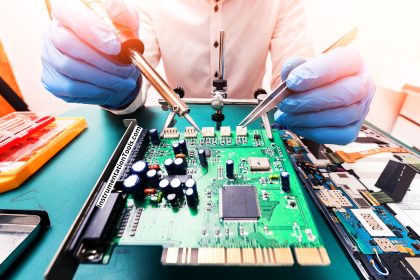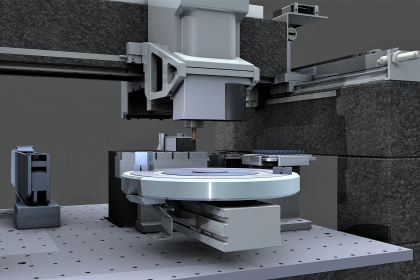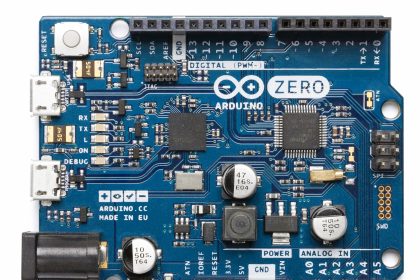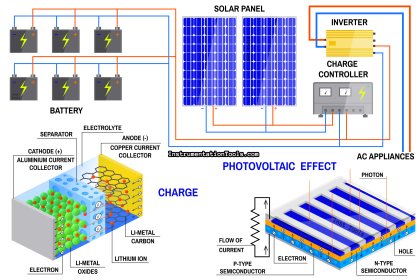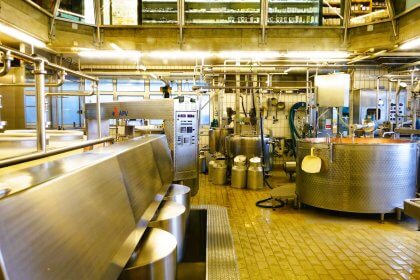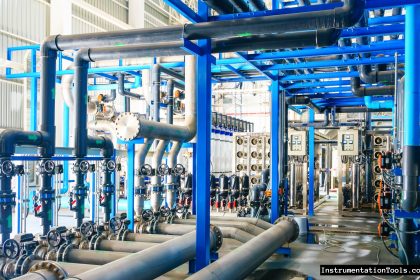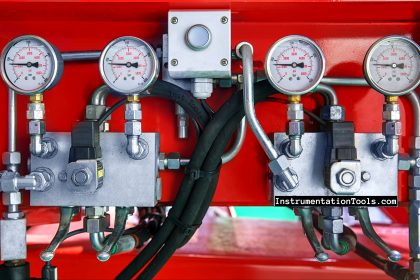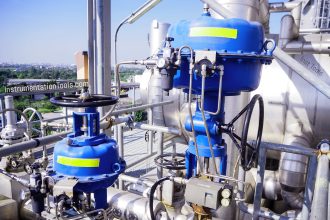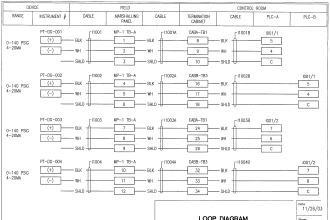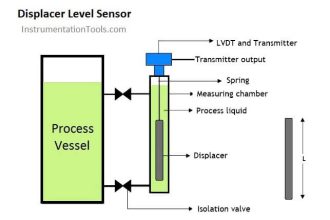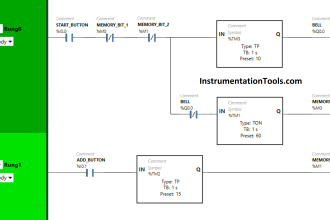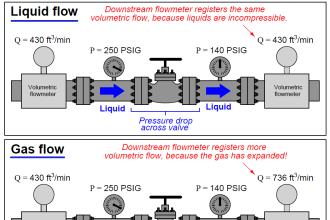In this post, we will learn the basic or general components used in an HVAC system.
HVAC stands for Heating, Ventilation, and Air Conditioning. It is a type of automation system which is used for handling air quality and thermal comfort given to the human environment for survival. It is based on thermodynamics, fluid mechanics, and heat transfer. Just like different types of automation systems, HVAC too is a type of automation system.
It is one of the most important parts required when setting up a high-rise building, commercial complex, industrial unit, hospital, parking unit, hotels, etc. where air quality and thermal parameters need to be maintained so that the personnel around can live properly.
Basic Components of HVAC System
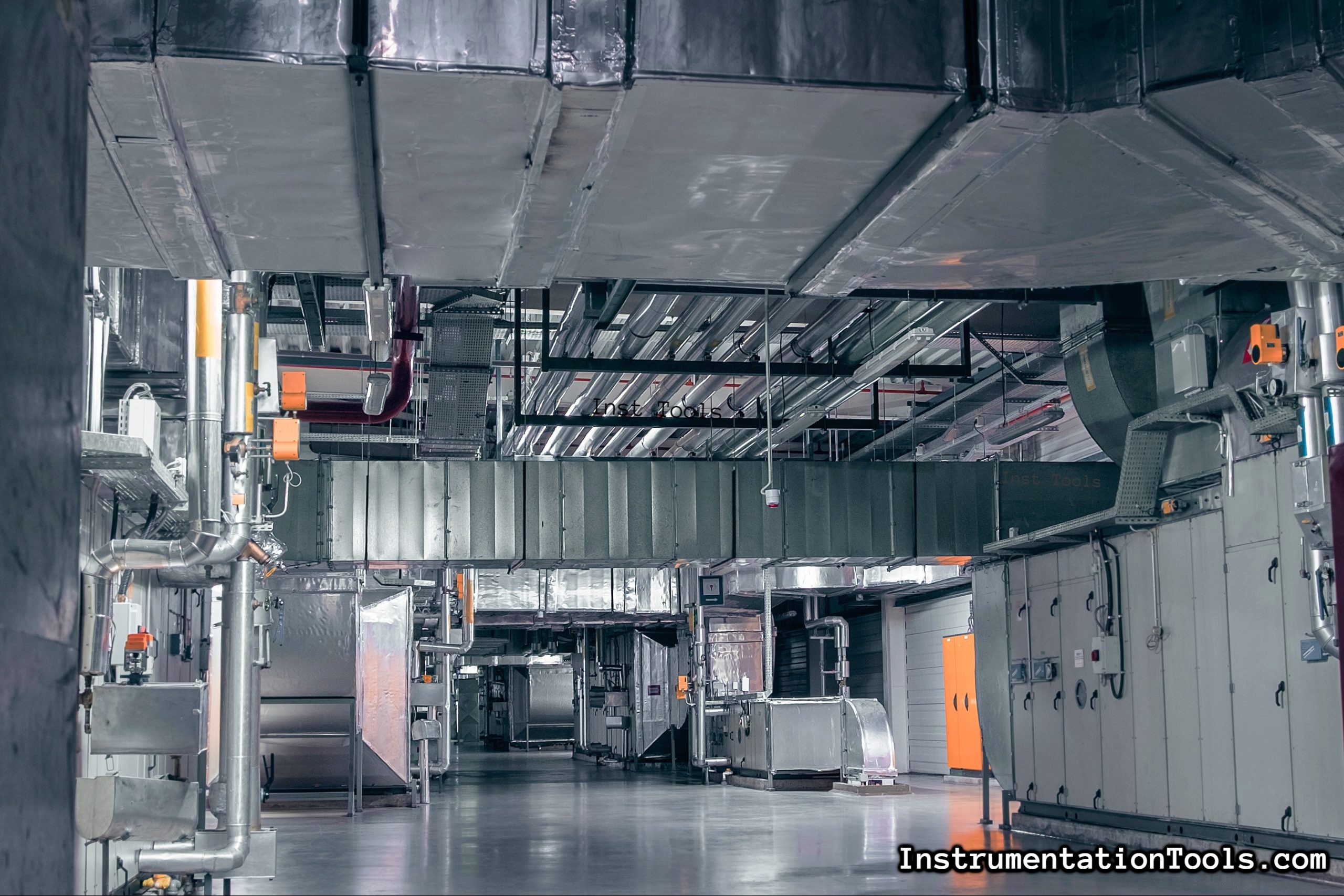
Traditional HVAC systems worked without PLCs; but nowadays, almost all of them have PLCs installed for better and more accurate control.
Water Stage
The water stage is the first step of temperature control. Air is not an efficient medium to heat or cool directly. The most efficient and inexpensive medium that we can heat or cool is water. This water can then be used to change the temperature of the passing air.
Heating water is very simple. Municipally-supplied water is pumped into a boiler where it is exposed to heat from oil, gas, coal, or electricity.
The hot water is then pumped out into coils that are used for heating the building air. Cooling water is a little more complex and revolves around a device called a chiller.
A chiller consists of a compressor, a condenser, and an evaporator. Two separate water circuits exist in the chiller; one circuit removes heat from the building air and one circuit dissipates that heat via a cooling tower.
Air Stage
The air stage is the medium for heat exchange in the building spaces. Air is constantly circulated through a building to either bring in or carry away heat as required. If the air needs to be cooled, it is directed over coils of cool water.
If the air needs to be heated, it flows over coils of hot water. Outside air is also vented in at times to save chiller energy when the outside air temperature is cool enough to help the system.
Chiller
A chiller is the central means of heat exchange between the inside and outside of a building. The chiller serves two basic functions: to cool the air in a building and to provide dehumidification. Water enters the evaporator and the condenser through external piping.
Tubing inside the piping is surrounded by a chiller medium, which is a compressible gas such as freon. As the water circulates within the tubing, heat is transferred between the water and the chiller medium.
The chiller medium is subjected to two stages of pressurization. First, the medium is fed into the condenser at high pressure by the compressor. When the medium is compressed, its temperature increases.
The chiller medium then leaves the condenser through an expansion device that suddenly lowers the medium’s pressure before it enters the evaporator. When the medium is thus expanded, its temperature decreases.
The change in pressurization between these two stages is the key to the cooling provided by the chiller. Heat is removed from the building air as the air passes over coils in the air ducts through which chilled water is flowing.
This water flows into the evaporator where the heat is transferred to the chiller medium. The chiller medium is pressurized in the compressor, then transfers the resultant heat energy, which is a combination of the building heat picked up in the evaporator and the effects of compression, into the water in the condenser circuit.
The condenser water is pumped into a cooling tower where the heat delivered from the compressor is dissipated into the outside air. In effect, the evaporator acts as a device to absorb heat from the building air while the condenser acts as a device to remove that heat from the building once it is picked up.
Cooling Tower
The job of the cooling tower is to radiate the heat of the building. Located on the outside of a building, the tower removes heat from the condenser water as the condenser water removes heat from the chiller. Water in a cooling tower is cooled by evaporation.
Every pound of water that a cooling tower evaporates removes 1,000 BTU from the system. This lowers the temperature of 1,000 pounds of water by 1 degree Fahrenheit. The condenser water is released from the top of the tower in a fine spray. The finer the spray, the more surface area is available for evaporation.
As the cooling tower fans blow air through the spray, the air carries away some of the heated water vapor, further aiding the evaporation process. Water in the tower cools by about 10 degrees Fahrenheit and is circulated back to the chiller to be heated again by the condenser.
The efficiency of evaporation in a cooling tower at any given time is determined by a combination of outside air temperature and humidity. A special type of scale, called wet-bulb temperature, was created for controlling cooling towers.
Wet-bulb temperature is determined by a thermometer enclosed in a water-soaked wick. A tower removes heat better on a cool, dry day than on a hot, humid day. This reading is therefore used to control most cooling towers.
Dehumidifiers
Warm air contains more moisture than cool air. The more moisture in the air, the more slowly perspiration evaporates. Since perspiration evaporation is an important mechanism for cooling the human body, high humidity increases discomfort during warm weather.
Good HVAC systems not only cool the building but also remove excess moisture. Condensation dehumidification is the process most often used in HVAC systems to remove excess moisture from the air.
When warm, moist air passes over a cooling coil, its temperature can fall to a point where the air can no longer hold all the moisture it contains. The moisture then condenses on the coil as droplets which may be drained away.
Typically this task is accomplished by the coils using chilled water to cool the building and condensation is simply drained off of these coils as it builds.
Centrifugal Pumps
A centrifugal pump consists of a rotating impeller inside of a specially shaped shell. As the impeller rotates, the liquid is taken in at the axis of the impeller and forced out along vanes to its tips.
The liquid moves faster at the tips of the impeller than at the axis. The fluid is then gathered in a specially shaped diffusing section called a volute, where it is discharged at high pressure.
Pumping systems are designed to increase both the flow and pressure of a liquid. In tall buildings, the pressure at which water leaves pumps is critical. Think of a water pipe in a building as a standing column of water.
In order to move the water from the bottom up, the water at the bottom has to be pushed up with enough force to overcome the weight of the water above and the friction of the piping system that the water is flowing in. This force is referred to as the total dynamic head of the system.
All of the water systems in a building must be designed to overcome the dynamic head of the system and provide the proper flow and pressure at the water’s destination. The water systems in a building include condenser water pumps, chilled water pumps, HVAC hot water pumps, and domestic water pumps.
Municipal water systems are often designed as low-pressure systems. Lower pressure in the system means that there is less stress on pipes and fittings, leading to longer life and lower maintenance costs.
Unfortunately, this means that most buildings get water at too low of a pressure. If a municipal water system only delivers enough pressure to overcome the dynamic head of a two-story building, any building over that height needs booster pumps to increase the pressure after it enters the building.
Booster pumps are also required for domestic and HVAC hot water systems. Nearly all buildings have their boilers located in the basement. After the water is heated in the boiler, pumps must be used to give the heated water sufficient pressure to go where needed in the building.
Centrifugal Fans
Traditional, three-bladed, “propeller-style” fans are not very common. They are often noisy and inefficient.
Centrifugal fans are classified according to blade arrangement such as radial, airfoil, and forward-curved. Widely used in larger HVAC systems, especially in industry, centrifugal fans move considerable volumes of air over a wide range of pressures.
Centrifugal fans have a rotating cylinder (impeller) mounted inside a scroll-type housing which somewhat resembles a snail’s shell. These fans have scoop-like blades that collect air and throw it against the inside of the housing to create the desired air stream for efficient cooling.
Fans are located in systems according to their intended functions. Supply fans, for example, bring in air and must be placed so that air flows through them into the air ducts.
Exhaust fans belong at the other end of the air stream. Fans that supply several spaces at once are centrally located. Otherwise, flow rates to different spaces vary and the fan operates inefficiently, wasting energy.
In designing systems, engineers must take into account the temperature of the air that the fan moves. Cool air is denser than hot air. This affects fan performance and efficiency. The way that air flows toward a fan is an important factor in determining its efficiency.
If the entire air stream moves at uniform speed, for example, all portions of the fan do equal work, and efficiency is maximized. If air speed is uneven, the work is unequally distributed, causing a lower operating efficiency. This problem is often solved by placing a length of the straight duct at the fan intake.
The duct smoothens the airflow before the air enters the fan. Proper design of duct work is an art in itself. If this is not done right, the system will have very poor efficiency and could also have significant audible noise problems.
Air-conditioning fans are usually arranged in long, rectangular ducts. Made from galvanized steel, the ducts may be attached to the ceilings, walls, or floors of the conditioned space.
Ducts often contain metal vanes that direct the airflow to increase system efficiency. Room air inlets and outlets are customarily rectangular in shape and fitted with a metal grill, which often has dampers that open and close to control flow.
Duct System
You probably won’t see the duct system itself referenced on a list of HVAC parts in many articles. Ducts can be very old and may even predate your current HVAC system.
However, they should not be overlooked as an essential part of system performance, as they distribute air all throughout your building. For the rest of your HVAC system to work, your ductwork must be clean and intact.
In old buildings, narrow ducts that don’t conform to modern HVAC standards can become clogged without notice. Cleaning the ducts annually can help you extend the service life of other components. Don’t forget to clean or replace filters according to the manufacturer’s instructions for your filter type.
In this way, we understand the most basic and general components required in the HVAC system.
Read Next:
- Types of HVAC Chillers
- HVAC Heat Transfer Loops
- Automation used in HVAC
- HVAC Objective Questions
- Valves in HVAC System
